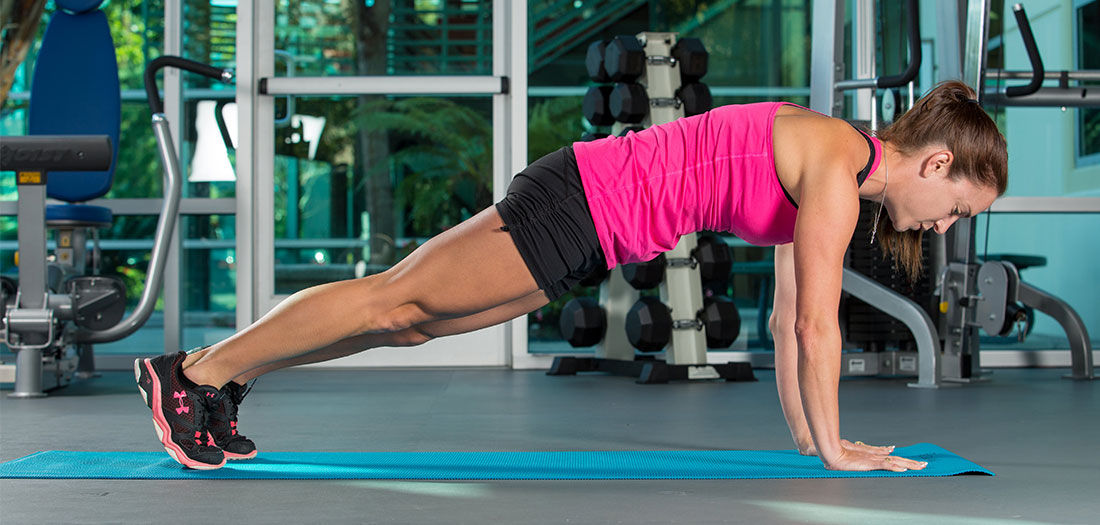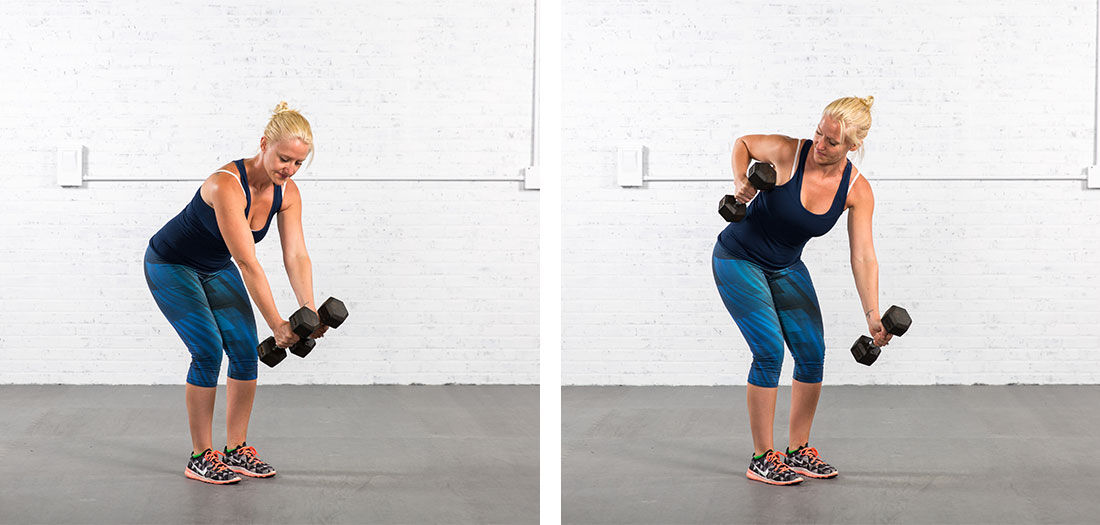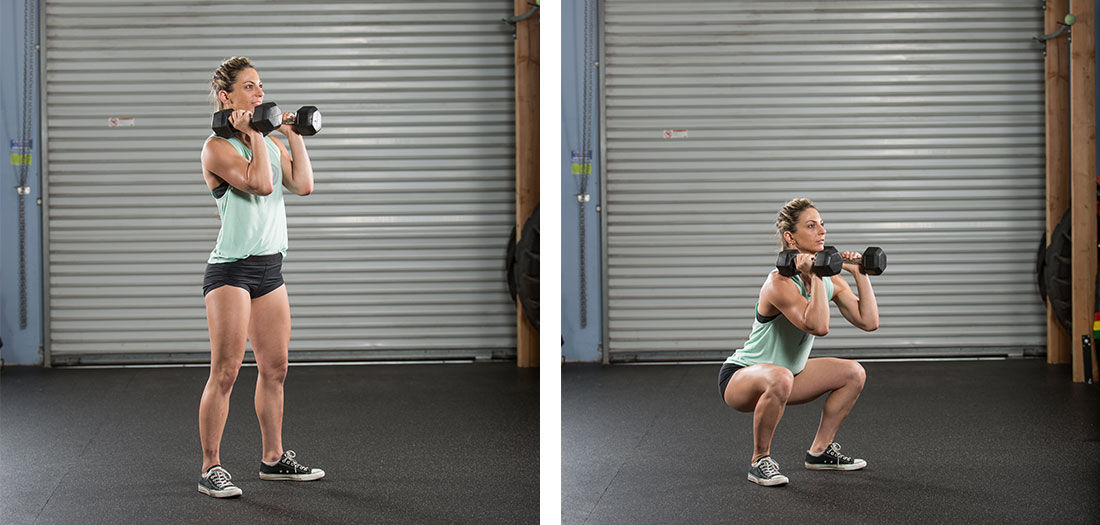In some cases, any movement is better than none. In most cases, however, combining imbalanced and misaligned movement with resistance eventually leads to discomfort and injury. As a health and exercise professional, you can help your clients avoid this pitfall by knowing how to cue both inner-body awareness and outer movement when guiding your clients or participants through a workout.
The plank, row, deadlift and squat are four of the most popular and effective exercises. Here, several top health and exercise professionals offer tips and suggestions for ensuring your clients achieve the most benefit while reducing their risk of injury:
Plank

Having a strong core is essential for every movement performed in sports and exercise, which is why planks are a part of many fitness programs. Assessing and progressing properly into planks is crucial to preventing injury and musculoskeletal imbalance.
"The majority of the population experiences musculoskeletal imbalances that can affect the position and condition of the skeletal structures involved in performing the plank (i.e., hips, pelvis, rib cage, shoulder girdle and spine) and the function of the muscles that control these areas during this particular exercise," explains Justin Price, creator of The BioMechanics Method Corrective Exercise Specialist Certification program. "As such, recommending clients perform a plank without first conducting a complete musculoskeletal assessment to identify their areas of weakness and dysfunction will likely set them up for pain, injury and further dysfunction."
One way to screen someone before doing modified or regular planks is to test transverse abdominis (TVA) activation. Even though we only have seven abdominal muscles (compared to 21 hip muscles and 11 spine muscles), the stronger muscles tend to overpower the weaker ones.
To assess TVA contraction, instruct your client to curl the fingers into the medial part of the anterior superior iliac spine (ASIS). Exhale completely while drawing the navel toward the spine. As soon as the TVA can be felt tightening under the fingers, stop contracting, as any extra effort will cause the obliques to contract and potentially override the TVA. Next, attempt to contract the TVA without exhaling, while still monitoring the ASIS, and then assess if it is contracting when doing basic supine core work, like knee marches.
Performing this assessment and progressing slowly into planks can help ensure maximum benefit and minimum risk. It may take longer to get to planks, but creating a solid foundation is worth the extra time.
Row

Scapular retraction and humeral extension are essential for training healthy upper-body alignment, otherwise known as good posture. The upper trapezius and latissimus dorsi often compensate for rhomboids and lower trapezius. According to personal trainer Cathleen Kronemer, “With one knee on a bench, one-arm rows often have too much rotation at the top of the move.” When this happens, the movement becomes very functional, but will use the strongest muscles and may override weaker ones.
To ensure the rhomboids and lower trapezius are participating in rows, isolate them as much as possible and then integrate into a functional movement. Before introducing a row, teach your client the superman with scapular retraction. Monitor and minimize low-back involvement and have your client lift the arms only as much as necessary. You can place a rolled-up towel under his or her forehead to keep the neck in alignment.
Deadlift

Pre-screening clients before allowing them to perform deadlifts is important because the hamstrings are a two-joint muscle and are lengthening during the movement, which increases the chance of injury.
"First, find out if the client can touch her toes," urges Ian Nimblett, the owner of Premier Fitness in New York. "If she can't, teach her to hip hinge with an emphasis on shifting her hips back with soft knees and shins forward. I like to place a bench in front of the client’s shins to cue them."
Breaking down a multijoint movement, like deadlifts, into its individual parts before instructing the final move increases the chance that the targeted muscles are ready to participate in the challenge.
Squat

Squats and their many variations are essential for everyday activities and for sports. Going slow and focusing on proper form is crucial to ensuring recruitment of the muscles through the chain.
"Nose-to-wall squats are a great way to take the forward cheat out of our squats, dead lifts and step ups," explains Jeremy Manning, owner of La Jolla's Finest Training in Southern California. "By limiting the space to cheat, we demand more effort from our glutes, latissimus dorsi and TVA. The connection between these three groups of muscles carries over to other exercises."
Manning also believes that slowing down tempo is a sure way to emphasize better alignment. Teach and practice at a slow place. Once your client has the basics mastered, you can speed up if necessary for his or her athletic and fitness goals.
Proper form cues and appropriate pace and progressions are the basic strategies to employ when seeking to optimize the benefits of an exercise and reduce the risk of harm. Take the time to cue effectively and set a strong foundation and you will likely find that results come quicker than either you or your clients expect.
ACE’s Personal Trainer Certification is backed by 30 years of science-based research. Learn more.




 by
by 






 by
by